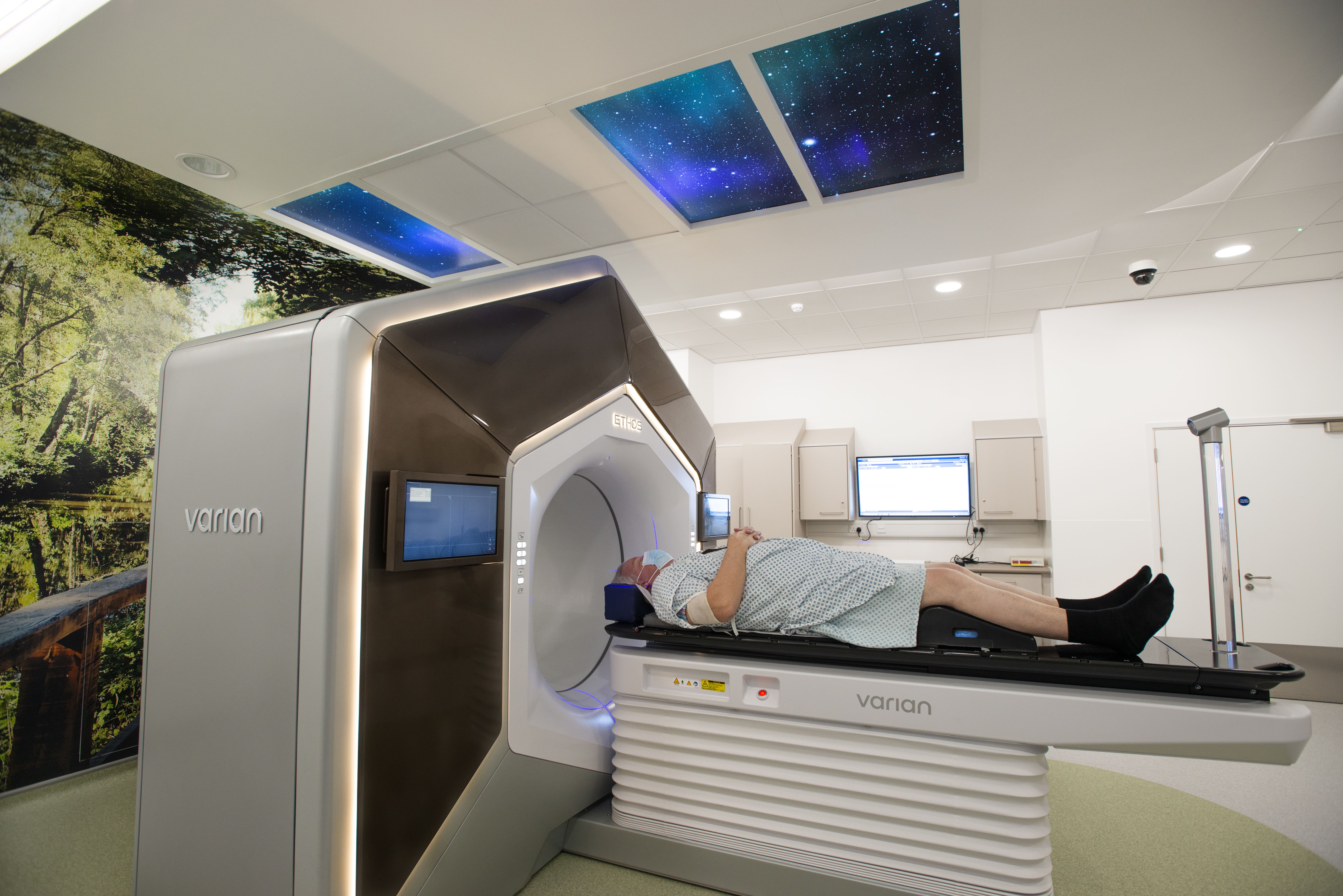Hospital uses AI to treat cervical cancer patient in UK first
The Ethos treatment involves a machine which uses scans to target specific areas for radiotherapy and delivers a prescription dose to tumours.

Your support helps us to tell the story
From reproductive rights to climate change to Big Tech, The Independent is on the ground when the story is developing. Whether it's investigating the financials of Elon Musk's pro-Trump PAC or producing our latest documentary, 'The A Word', which shines a light on the American women fighting for reproductive rights, we know how important it is to parse out the facts from the messaging.
At such a critical moment in US history, we need reporters on the ground. Your donation allows us to keep sending journalists to speak to both sides of the story.
The Independent is trusted by Americans across the entire political spectrum. And unlike many other quality news outlets, we choose not to lock Americans out of our reporting and analysis with paywalls. We believe quality journalism should be available to everyone, paid for by those who can afford it.
Your support makes all the difference.A hospital has used artificial intelligence to treat a patient with cervical cancer for the first time in the UK.
The Royal Surrey Foundation Trust treated Emma McCormick 44, using adaptive radiotherapy after she was diagnosed with the cancer last April and was referred to St Luke’s Cancer Centre.
The treatment, called Ethos, involves a machine, created by healthcare company Varian, which uses artificial intelligence to deliver a prescription dose to tumours.
The AI technology uses daily CT scans to target the specific areas that need radiotherapy, which helps avoid damage to healthy tissue and limit side-effects.
Patients are required only to lie still on a flat surface inside the machine for the duration of the treatment.
There is a screen above the machine which shows different images, and medical staff can play music to make the treatment more comfortable.
Patients are given slots of around 20 to 25 minutes per treatment, although Ms McCormick’s was slightly longer as she was the first patient.
She received five AI treatments a week for five weeks before having a further two weeks of brachytherapy.
By the end of August, she was given the all-clear.
Outlining her thoughts on being the first patient to receive the new treatment, she told the PA news agency: “I suppose there was a little bit of excitement because, although I was going through treatment, I was almost helping other people.
“(I thought) If it works for me, and they get information from me, it can help somebody else. It definitely worked and did what it was meant to do and so hopefully that helps others.”
The treatment that I had and the care the staff gave me, I can't fault it at all. It was exceptional care
Ms McCormick, who is from West Sussex added: “The treatment that I had and the care the staff gave me, I can’t fault it at all. It was exceptional care.
“Everyone was so nice, I felt I was really well looked after. If I had any questions or concerns about anything, we had a conversation. I had weekly phone calls too just to see how I was getting on.”
Dr Alex Stewart, who treated Ms McCormick, said one of the benefits of the treatment is that it allows for more precision, meaning there are fewer side-effects for the patients.
She added that, due to the cervix and uterus being mobile, previous treatments sessions involved working out where the cervix might have moved to, doing a scan to check, and then applying radiotherapy to that entire area.
She told PA: “When the patient comes in for treatment, they lie down and a scan is performed. On that scan we work out exactly where the bladder is, where the bowel is, where the uterus and cervix are. Then we make a new radiotherapy plan each day for the patient.
“Previously this would have taken hours and hours but, with the advent of artificial intelligence, the machine contours where it sees everything to be.
“We then check that carefully and the machine makes a new radiotherapy plan each day.
“We’re able to do it in around five minutes or so.”
Following the success with Ms McCormick’s treatment, nine other cervical cancer patients are being now treated in the same way.
Dr Stewart said: “I’m sure we’ll be developing it and rolling it out to all of our pelvic cancers eventually.
“Whether we do other cancers is difficult to say. There’s a lot of benefit to using it so I think it will be used in a number of different areas. I think it’s really, really exciting.”
Louise Stead, chief executive at the trust, said: “I am very proud of how we are leading the way in this area of adaptive radiotherapy. The trust is fortunate to have extremely strong physics and research departments that excel at what they do.
“The dedication, commitment and hard work of all the staff in the department is also key to achieving this UK first. Congratulations and well done to all those involved.”